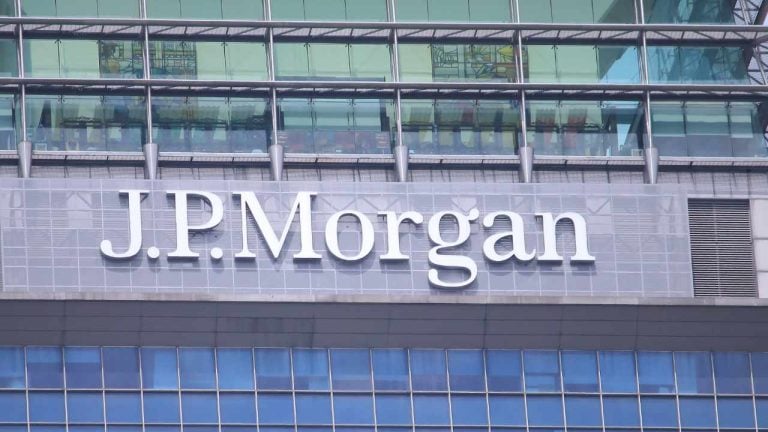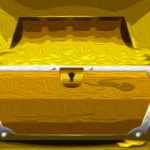
The Concerns Raised by JPMorgan's Analysts
JPMorgan, a global investment bank, has recently released a report cautioning about the potential risks that Tether's USDT stablecoin poses to the overall crypto market. The analysts at JPMorgan have specifically pointed out the lack of regulatory compliance and transparency exhibited by Tether, which is the largest stablecoin in the world with a market capitalization of over $96 billion.
According to the report, Tether's non-compliance with existing regulations is becoming an increasing risk for the crypto market as a whole. In comparison to Circle, the issuer of USDC stablecoin, Tether falls short in terms of regulatory compliance for their stablecoins. As a result, JPMorgan's analysts believe that stablecoin issuers who are more aligned with the current regulations will benefit from the impending regulatory crackdown on stablecoins and gain a larger market share.
Tether's Response to JPMorgan's Criticism
In response to JPMorgan's criticism and concerns about the risks Tether poses to the crypto market, Tether's CEO, Paolo Ardoino, addressed the issue. Ardoino stated that while Tether's dominance in the market may be seen as a negative by competitors, it has never been detrimental to the markets that rely on Tether the most. He emphasized that Tether has always worked closely with global regulators to educate them about the technology and provide guidance on its proper understanding.
Tether has faced regulatory scrutiny in the past, including a $41 million fine imposed by the U.S. Commodity Futures Trading Commission (CFTC) in 2021 for misrepresenting its reserves. The company has since made efforts to improve transparency by issuing quarterly attestations of its operations and finances. In 2023, Tether reported a profit of $6.2 billion.
Conclusion
The concerns raised by JPMorgan's analysts regarding Tether's lack of regulatory compliance and transparency highlight the potential risks that stablecoins can pose to the overall crypto market. As regulatory authorities continue to focus on stablecoins, it is crucial for stablecoin issuers to ensure compliance and transparency to mitigate these risks. The future of stablecoins and their impact on the crypto market will largely depend on how well they can address these concerns and adapt to the evolving regulatory landscape.
What are your thoughts on JPMorgan's warning about Tether, USDT, and the risks to the overall crypto market? Share your opinions in the comments section below.
Frequently Asked Questions
What are the three types?
There are three types of IRAs. There are three types of IRAs: Roth, Traditional, and SEP. Each has its own advantages and disadvantages. Each type will be covered in detail below.
Traditional Individual Retirement Account (IRA).
A traditional IRA allows you contribute pretax money to an account which can be used to defer taxes and earn interest. When you retire, your withdrawals are not subject to tax.
Roth IRA
Roth IRAs allow for you to make after-tax deposits into an account. The earnings are tax-free. Withdrawals from the account are also tax-free when you withdraw funds for retirement purposes.
SEP IRA
This is similar to a Roth IRA but requires additional contributions from employees. The additional contributions are subject to tax, but earnings accrue tax-deferred. You may choose to convert the entire amount to a Roth IRA when you leave the company.
Which type of IRA is the best?
The most important thing when choosing an IRA for you is to find one that fits within your goals and lifestyle. You need to decide whether you want to maximize tax deduction on your contributions, minimize taxes now but pay penalties later, and if you just want to avoid taxes.
If you're saving for retirement and don't have much money invested, the Roth option could make sense. It also makes sense if you continue working after age 59 1/2 and expect to pay income taxes on any accounts withdrawals.
Traditional IRAs might be more beneficial if you are looking to retire early. You'll likely owe income taxes. The Roth IRA is a better option if you plan to continue working well beyond age 65. It allows you to withdraw any or all of your earnings and not pay taxes.
Is a gold IRA worth interest?
It all depends upon how much money you invest. If you have $100,000 to spare, then yes. You will not be able to answer if your income is less than $100,000
The amount you invest in an IRA affects its ability to earn interest.
If you have more than $100,000 in retirement savings each year, you might consider opening a regular brokerage accounts.
While you may earn more interest there than elsewhere, you are also exposed to more risky investments. You don't want your entire portfolio to go bankrupt if the stock markets crash.
An IRA may be better for you if your annual income is less than $100,000. At least until there is a rebound in the market.
What are the pros & con's of a golden IRA?
An excellent investment vehicle is a gold IRA. This is for people who wish to diversify but do not have access to traditional banking services. It allows investors to invest in precious materials such as gold and silver without paying tax on gains until they are withdrawn.
The downside is that withdrawing money early will pay ordinary income tax on the earnings. However, creditors will not be able to seize these funds if you default on your loan.
A gold IRA might be the right choice for you if you enjoy owning gold and don't worry about taxes.
Statistics
- The IRS also allows American Eagle coins, even though they do not meet gold's 99.5% purity standard. (forbes.com)
- If you accidentally make an improper transaction, the IRS will disallow it and count it as a withdrawal so that you would owe income tax on the item's value and, if you are younger than 59 ½, an additional 10% early withdrawal penalty. (forbes.com)
- You can only purchase gold bars of at least 99.5% purity. (forbes.com)
- Same tax rules as traditional IRA SEP IRA contributions in 2022 are limited to 25% of compensation or $66,000, whichever is less Before setting up a Silver IRA, understand the fees and IRS restrictions. (sltrib.com)
External Links
investopedia.com
en.wikipedia.org
wsj.com
kitco.com
How To
Precious Metals Approved By the IRA
IRA-approved metals are great investments. Various options can help diversify your portfolio and protect against inflation from gold bars to silver coins.
There are two types of precious metal investment products. Physical bullion products such bars or coins are considered to be physical assets, as they exist in tangible form. However, exchange-traded fund (ETFs), which are financial instruments, track the price movement of an underlying assets, such as gold, and can be purchased directly from the company issuing them. ETFs are traded like stocks on stock markets, so investors can purchase shares directly from the company issuing them.
There are various types of precious metals available for purchase. Silver and gold are commonly used for jewellery making and decoration. However, platinum and palladium tend to be associated with luxury goods. Palladium tends to hold its value better than platinum, which makes it ideal for industrial uses. Although silver is useful for industrial purposes it is preferred for decorative uses.
Due to the expense of mining and refining natural materials, physical bullion is more expensive. However, they are generally safer than paper currencies and provide buyers with greater security. One example is that consumers could lose trust in the currency, and may look for other currencies if the U.S. Dollar loses its purchasing power. However, physical bullion products don't rely on trust between nations or companies. They are backed instead by central banks or governments, providing customers with peace of mind.
Prices for gold fluctuate depending on demand and supply. If demand rises, the price will increase. Conversely, if supply exceeds demands, the price will drop. Investors have the opportunity to profit by fluctuations in gold's price. These fluctuations are good for investors who have physical bullion products as they get a better return on their investment.
Precious metals can't be affected by economic recessions. As long as the demand for gold remains strong, it will continue to rise. Precious metals are safe havens in times of uncertainty because of this.
The most sought-after precious metals are:
- Gold – The oldest form of precious metal, gold is also known as “yellow” metal. Gold is a household name but it is rare underground element. Most of the world's gold reserves are in South Africa, Australia, Peru, Canada, Russia, and China.
- Silver – Silver is second most valuable precious metal, after gold. Silver can be mined from naturally occurring deposits, much like gold. Silver is extracted from ore, not rock formations, unlike gold. Because of its durability and malleability, as well as resistance to tarnishing, silver is widely used in commerce and industry. Over 98% of global silver production is produced in the United States.
- Platinum – Platinum is the third most valuable precious metal. It has many industrial uses, including catalytic converters, fuel cells, and high-end medical equipment. You can also use platinum in dentistry to make dental crowns and bridges.
- Palladium: Palladium is the 4th most valuable precious metallic. Due to its strength and stability, it is quickly gaining popularity among manufacturers. It is used in electronics and aerospace technology, as well as military technology.
- Rhodium: Rhodium ranks fifth in the most valuable precious metals. Although rhodium is extremely rare, it is highly sought after because of its use in automobile catalysts.
- Ruthenium – Ruthenium ranks sixth in the list of most valuable precious metals. While palladium and platinum are scarce, ruthenium has a large supply. It is used in steelmaking, chemical manufacturing, and engine design.
- Iridium- Iridium, the seventh most precious precious metal, is also known as Iridium. Iridium is a key component in satellite technology. It is used to construct orbiting satellites that transmit television signals, telephone calls, and other communications.
- Osmium (Osmium) – Osmium has the eighth highest value precious metal. Osmium's ability to withstand extreme temperatures makes it a common metal in nuclear reactors. It's also used in jewelry, medicine and cutting tools.
- Rhenium: Rhenium ranks as the ninth-most valuable precious metal. Rhenium is used to refining oil and natural gas, in semiconductors, and rocketry.
- Iodine – Iodine is the tenth most valuable precious metal. Iodine can be used in radiography, photography, and pharmaceuticals.
—————————————————————————————————————————————————————————————-
Based on [POSTTITLE]
by [POSTAUTHOR]
















